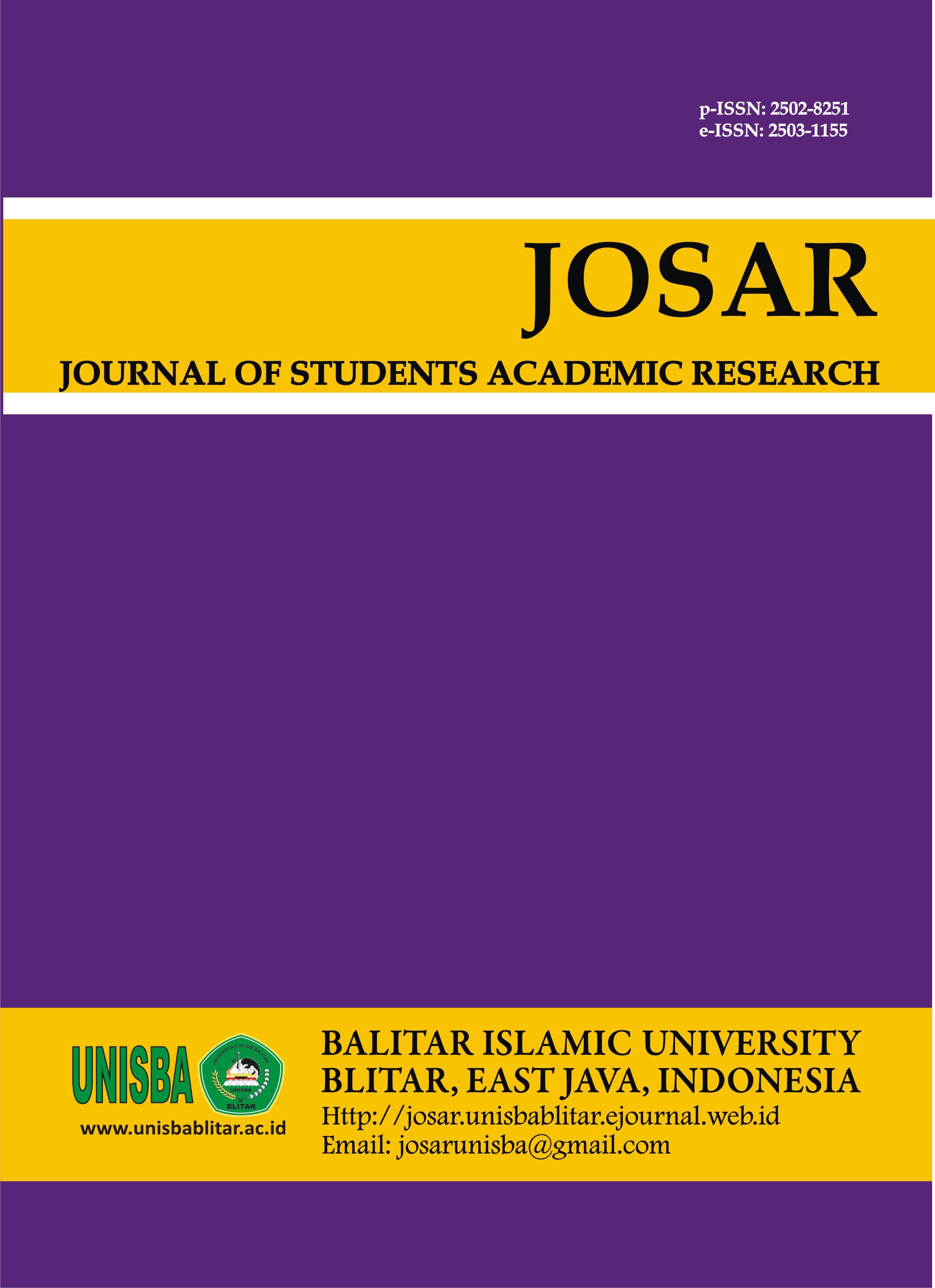DEVELOPMENT OF MULTIMEDIA LEARNING SOLUTION MATHEMATICS (MUJAMATCAH) AS A LEARNING MEDIA FOR GRADE IV PRIVATE SCHOOL STUDENTS
DOI:
https://doi.org/10.35457/josar.v6i2.1973Keywords:
Development, learning multimedia, fractionsAbstract
The development of technology is currently very fast and influences various fields, one of which is education. for example the use of media in learning, such as the use of multimedia learning. In addition, this study also aims to improve students' understanding of fraction material for fourth grade elementary school students. This is the background of this research in multimedia learning mathematics development. The purpose of this study was to develop multimedia learning mathematics on fractions for fourth grade elementary school students. This research is a Research and Development (RnD) type of research according to Sugiyono which is limited to only seven stages of research. The stages include, potentials and problems, data collection, product design, design validation, design revision, product testing, and product revision. The result of this research is multimedia learning of fraction mathematics (Mujamatcah) for fourth grade elementary school students with the aim of increasing students' understanding. Where to get the following results, for the validation of material experts 94% (very feasible), validation of media and multimedia experts for learning 87% (feasible), and validation of language 89% (feasible). The results obtained from the student readability test obtained data of 96% (very feasible) and for teacher readability of 91% (very feasible).
References
Arsyad, Azhar. 2011. Media pembelajaran. Jakarta: PT Raja Grafindo Persada.
BSNP. 2007. Kurikulum Tingkat Satuan Pendidikan. Jakarta: BSNP.
Daryanto. 2013. Media Pembelajaran Peranannya Sangat Penting dalam Mencapai Tujuan Pembelajaran. Yogyakarta: Gava Media.
Wibawanto, Wadah. 2017. Desain dan Pemrogaman Multimedia Pembelajaran Interaktif. Jember: Cerdas Ulet Kreatif.
Dewi, Santi Ratna dan Haryanto. 2018. Pengembangan Multimedia Interaktif Penjumlahan Pada Bilangan Bulat Untuk Siswa Kelas IV Sekolah Dasar. Premiere Educandum: Jurnal Pendidikan Dasar dan Pembelajaran, (Online), 1(9), 9–22. (http://e-journal.unipma.ac.id/index.php/PE), diakses 15 Januari 2020.
Fitri, Lailatul, dkk. 2019. Multimedia Interaktif Matematika Materi Pecahan Pada Sdit Fajar Ilahi 2. Journal of Digital Education, Communication, and Art, (Online), 2(2), 299-108. (https://www.neliti.com/id/publication/299870.multimedia-interaktif-matematika-materi-pecahan-pada-sdit-fajar-ilahi-2), diakses 15 Januari 2020.
Heruman. (2010). Model Pembelajaran Matematika. Bandung: Remaja Rosdakarya.
Mariani, Scolastika. 2010. Pengajaran Konsep Pecahan di Sekolah Dasar. Jurnal Unnes, (Online), , 119-129. (http://journal.unnes.ac.id.Pengajaran-Konsep-Pecahan-di-Sekolah-Dasar.), diakses 15 Januari 2020.
Munir. 2012. Multimedia Konsep Aplikasi dalam Pendidikan. Bandung: Alfabeta.
Pemerintah Indonesia. 2003. Undang-Undang Republik Indonesia Nomor 20 Tahun 2003 Tentang Pendidikan Nasional. Lembaran RI Tahun 2003 No. 20. Jakarta: Sekretariat Negara.
Priatna, Nanang dan Ricki Yuliardi. 2019. Pembelajaran Matematika untuk Guru SD dan Calon Guru SD. Bandung: PT. Remaja Rosdakarya.
Qomalasari, L. 2018. Manajemen Kelas untuk Meningkatkan Pembelajaran PAI. Skripsi, (Online), (http://repository.radenintan.ac.id/3372/4/9_ISI.pdf&ved=), diakses 15 Januari 2020.
Sugiarti, Sri, dkk. 2009. Matematika untuk SD/MI Kelas 4. Jakarta: CV. Sindunata.
Sugiyono. 2016. Metode Penelitian Kuantitatif, Kualitatif, dan R&D. Bandung: Alfabeta.
Sujono. 2009. Asuhan Keperawatan Pada Ana. Yogyakarta: Graha Ilmu.
Umar. 2014. Media Pendidikan: Peran dan Fungsinya dalam Pembelajaran. Satin Siwo Metro, 11(1), 131-144.
Wandini, Rori Rizki. 2019. Pembelajaran Matematika untuk Guru MI/SD.Medan: CV. Widya Puspita.
Downloads
Published
Issue
Section
License
Authors who publish in this journal agree to the following terms:
- Authors retain copyright and grant the journal right of first publication with the work simultaneously licensed under a Creative Commons Attribution License that allows others to share the work with an acknowledgment of the work's authorship and initial publication in this journal.
- Authors are able to enter into separate, additional contractual arrangements for the non-exclusive distribution of the journal's published version of the work (e.g., post it to an institutional repository or publish it in a book), with an acknowledgment of its initial publication in this journal.
- Authors are permitted and encouraged to post their work online (e.g., in institutional repositories or on their website) prior to and during the submission process, as it can lead to productive exchanges, as well as earlier and greater citation of published work (See The Effect of Open Access).
Deprecated: json_decode(): Passing null to parameter #1 ($json) of type string is deprecated in /home/ejournal.unisbablitar.ac.id/public_html/plugins/generic/citations/CitationsPlugin.php on line 68










